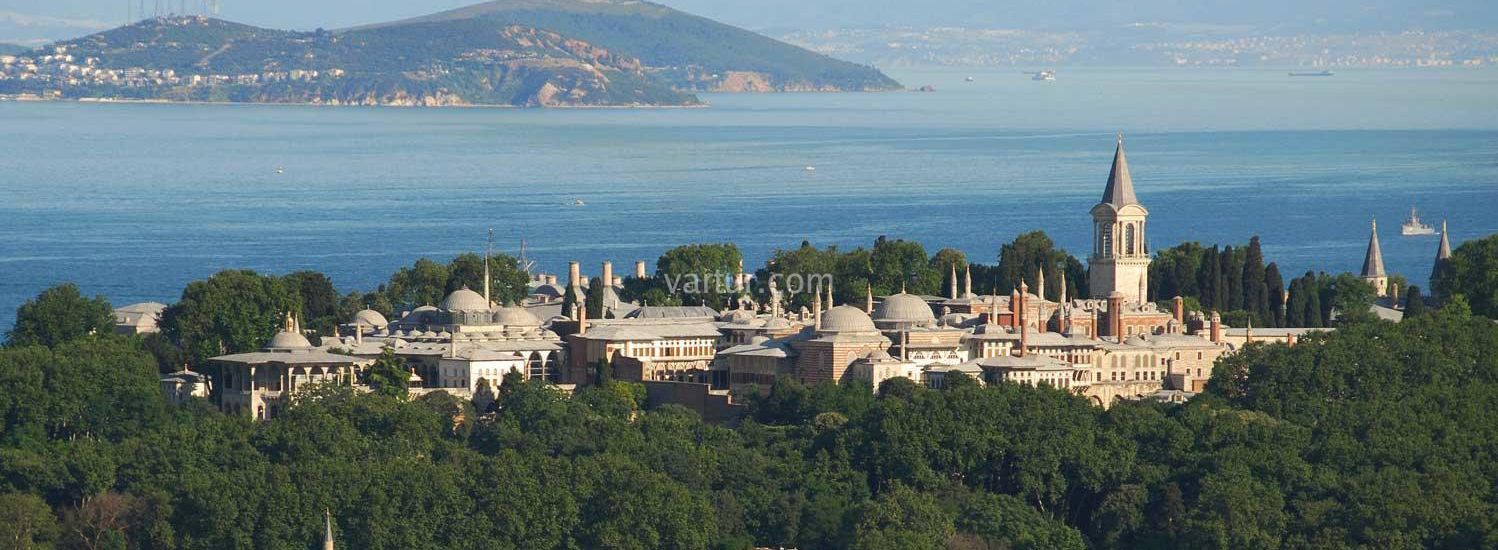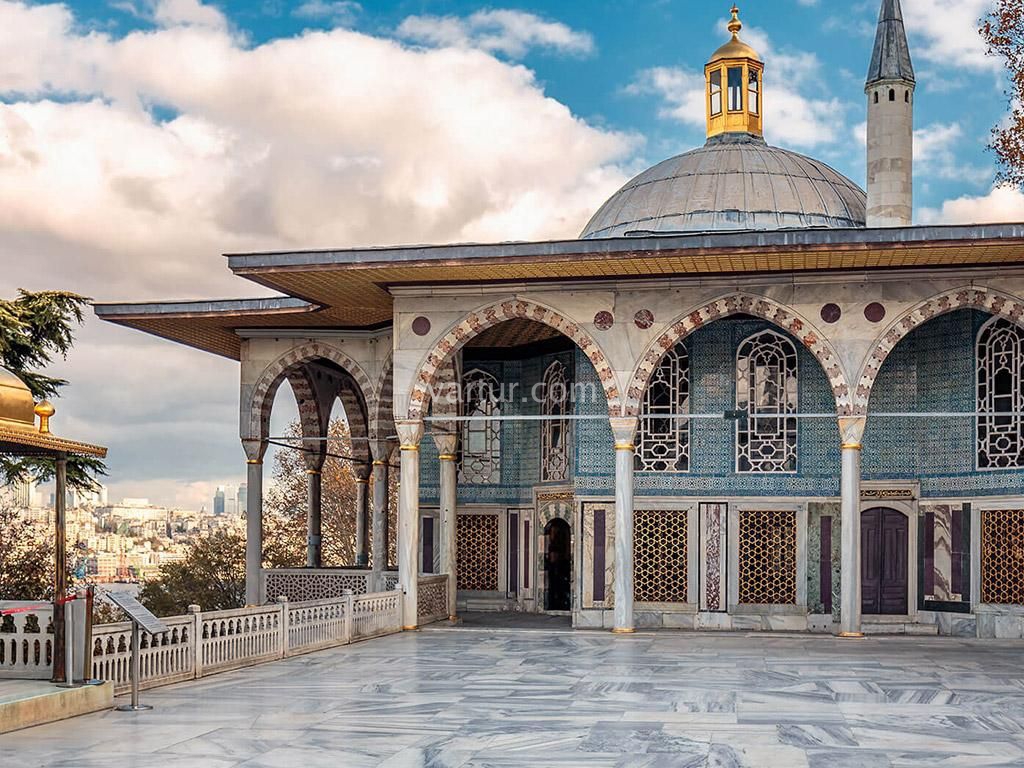.jpg)
Topkapi Palace
4 mins read 1/4/2024 Comments (0)
Topkapı Palace, which was the administration, education and art center of the empire for nearly 400 years after the conquest of Istanbul, also served as the home of the dynasties and sultans. The Palace, which consists of Harem and 4 courtyards, started to serve as a museum after the Proclamation of the Republic. We have brought together the history of the Palace and information about the interesting places in the harem and the yard for you.
.jpg)
Ottoman administration, art and education center
After Fatih Sultan Mehmed conquered Istanbul in 1453, the palace started to be built in 1460 and completed in 1478; It was built on an area of 700,000 square meters on the Eastern Roman acropolis in Sarayburnu, at the corner of the historical Istanbul peninsula between the Marmara Sea, the Bosphorus and the Golden Horn. It has been used as the administration, education and art center of the empire for approximately four hundred years from the Sultan Mehmed the Conqueror to the 31st sultan, Sultan Abdulmecid, and was also the sultan's house. Although the dynasty was moved to Dolmabahçe Palace in the middle of the 19th century, it has always preserved its importance.

One of the largest palace-museums in the world
After the establishment of the Republic of Turkey on April 3, it became a museum in 1924 and is the first museum in the Republic of Topkapi Palace Museum, currently covering an area of about 300,000 square meters. Sur-i Sultani, built by Fatih, and Topkapı Palace, separated from the city by the East Roman walls by the sea, is one of the largest palace-museums of the world with its architectural structures, collections and nearly 300,000 archive documents.
The palace is surrounded by gardens and squares, consisting of architectural structures around the four courtyards, which are entered through the Sultanate Gate on the Hagia Sophia.
I. Courtyard
In the first courtyard (Alay Square), which is the first courtyard of the palace and where the public entry, the Hagia Irene Church, Bakery, Hospital, Wood Warehouse, Hasırcılar Quarry, etc., were used.
II. Courtyard
The second courtyard of the palace is Divan Square (Justice Square), where the venues of the state administration take place. In this courtyard, which has witnessed many ceremonies throughout history, there is Divan-ı Hümayun (Kubbealtı) where divan meetings are held and the Divan-ı Hümayun Treasure next to it. Behind the Divan structure is the Justice Tower, which represents the Justice of the Sultan. Next to Kubbealtı is the entrance to the Harem and the Zülüflü Baltacılar Ward. Has Stables, located in the same direction as the Zülüflü Baltacılar Ward. Behind the porticos in the direction of Marmara Sea, there are palace kitchens and additional service buildings. To the north of the Justice Square, Babüssaade is located where the cult, eve, feast and funeral ceremonies are held and Sancak-ı Şerif is delivered to the Grand Vizier as the Serdar-ı Ekrem.

III. Courtyard
Third Courtyard, Enderun (inner palace) is located next to the sultan's places. It also includes the houses, the dormitories and buildings belonging to the Saray School established during the Sultan Murad II period.
While the Supply Room, Fatih Mansion / Enderun Treasure and Has Room, where the Sultan accepted the statesmen and some foreign ambassadors, came first as the places belonging to the sultan, the wards of the Enderun Palace school, which was also known as Small Room, Large Room, Expedited, Pantry, Treasure, Has Room. It is lined up around the courtyard from the entrance. With the 15th century Ağalar Mosque placed diagonally in the courtyard, III. Built by the demolition of the pool pavilion during the reign of Ahmed III. Ahmed Library emphasizes the importance attached to Enderun education.
IV. Courtyard
After Enderun Courtyard, passed to IV, where the sultan's mansions and hanging gardens were found. This room, which is also reached through the doors of Has Oda's Marble Sofa, includes the Circumcision Room, Baghdad and Revan Pavilions, and Iftariye Pavilion, which are the most outstanding examples of classical mansion architecture of Ottoman art. On the lower level of the courtyard, there is a hanging flower garden, wooden Black Mustafa Pasha Mansion, Hekim Tower, Sofa Mosque on the bottom floor, Mecidiye Mansion and Esvab Room, which were built during the reign of Sultan Abdulmecid. It is known that there are many mansions and pavilions that do not survive except the infrastructure of the Çinili Kiosk, the Sepetçiler Palace and the İncili Pavilion, among the mansions in the Hasbahçeler that surround the Topkapı Palace.
What are the collections in Topkapı Palace Museum?
Topkapı Palace's enormously rich collections and historical history, built with extremely interesting stories, make this palace one of the most worth seeing palaces in the world. Imperial Treasury, European Porcelain and Glass, Copper and Tombak Kitchenware, Chinese and Japanese Porcelain, Silverware, Cardigan and Sacred Relics, Istanbul Glass and Porcelain, Sultan's Dresses, Sultan portraits and painting collection, Weapons are among the valuable collections exhibited in the museum.

